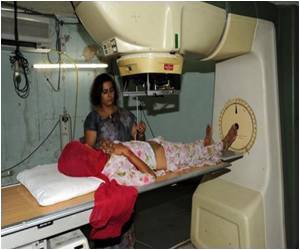It is important to take into consideration the radiation dose to the breast and lungs prior to deciding the type of CT protocol to use.
It is important to take into consideration the radiation dose to the breast and lungs prior to deciding the type of CT protocol to use for thoracic imaging of individual patients, according to a recent study.
The study compared organ doses to the breast, lungs and pelvis using commonly used protocols and found a change in protocol could decrease breast radiation dose by more than 50 percent. "The highest doses to the breast skin and parenchyma were found with our standard thoracic CT protocol (120 kVp, variable 120-320 mA) and the protocol we use to assess for pulmonary embolism in the general population (120kVp, variable 200-394 mA)," said Dr. Diana Litmanovich of Harvard Medical School in Boston, and the lead author of the study. "We found the dose was reduced by more than half when we used our protocol for assessing pulmonary embolism in pregnant or young patients," (100 kVP, fixed 200 mA), said Dr. Litmanovich.
The standard thoracic CT and the pulmonary embolism protocols also led to the highest radiation doses to the lung, Dr. Litmanovich said. The lung received the highest organ dose regardless of the protocol, while pelvic radiation was low regardless of the protocol, she said.
"Despite efforts to reduce radiation dose, irradiation of the breast and lung remain substantial," said Dr. Litmanovich. "The study emphasizes the need for caution when we are planning our CT protocols," she said.
Source-Eurekalert
















